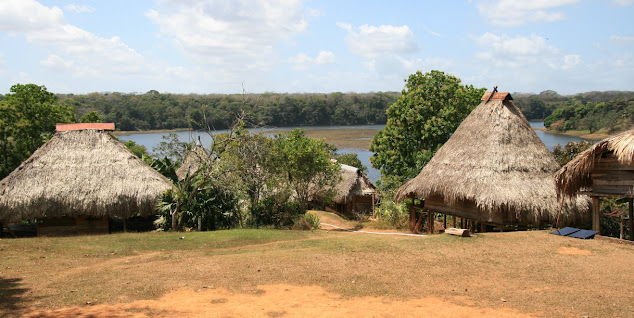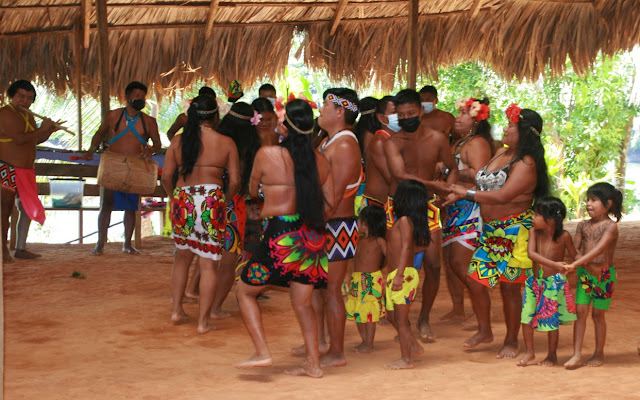Panama City
Panama City
We went
through the Panama Canal earlier in the trip (December), and have been through
it before, but this was our first stop in Panama City. It is an unusual city as proven by the fact
that the sun rises over the Pacific and sets over the Atlantic. We will travel northwest from here to get
through the canal to the Atlantic. This
is truly a mind blowing combination of facts.
Even after looking at a map I’m not quite sure I believe it.
We chose to
take a non-ship sponsored tour today.
This may not have been the best decision for an unusual reason. The port we docked at is unfinished. We were informed late at night the night
before our landing that we could not walk through the port but that there would
be a port shuttle bus to take us out of the port area. The ship tour busses were allowed on the
dock, but nobody else. Apparently this
is a bone of contention as the ship tours are all with one company setting up a
monopoly. We were the first people off
the ship when it was announced we could disembark. We asked about the shuttle and it was not
actually running until 9:00. It was about 8:30, the time we were supposed to
meet our tour. We got on the shuttle
when it arrived and were taken out, but we had no idea where it would drop
us. Apparently, neither did the tour
company. A taxi driver used his cell
phone to call our tour company, and we finally made connections at about 9:30.
We drove
about an hour to the Chagres National Park.
There were a number of boats parked on the lake shore. The boats are quite long, and very
narrow. I don’t remember seeing boats
quite like this before. I asked our
guide about it and he didn’t know why this design. We loaded into one of the boats and motored
across the lake to a native Indian village.
When we are in the boat I look at the inside walls of the boat and see
it is carved out and a light dawns. We
are riding in what amounts to a motorized dugout canoe. Now the design makes sense. One tree.
One boat.
There are 8 native Indian villages on the man-made lake (covering almost 1/3 of interior of the country) which was created to feed water to the lock system. We were met by a welcoming committee in native dress.
There are 25 families and about 60 people living in the village. We were late to the camp, and the other visitors had gone up a tributary to a waterfall. We awaited their return while we watched lunch being cooked over an open fire: lightly breaded freshly caught fish deep-fat-fried in a large cast iron dutch oven) We walked through the village and saw the houses built on stilts so people can work in the shade on the ground floor and climb a notched tree trunk ladder to their living space on the second floor. The other tourists returned and we enjoyed lunch served in large leaves looking like a large green waffle cone, ornamented with a fresh red hibiscus flower. Fish, plantains, and many fruits.Next, we were off in the hollowed boat for a fifteen minute ride in lower water to a path that took us over low-water rocks to see a waterfall. We stripped our outer wear and glided in the pool to stand under the water and let it pelt our shoulders for a cool massage. Then back to the van and back to the ship.
This day was the closest yet to what we experienced at Lake Titicaca and their floating islands in Peru.











JEN!!!! You look GORGEOUS!!!!
ReplyDeleteJERRY!!!! You look refreshed!!!!!
Thinking...."Al Bell".........!!!!!!